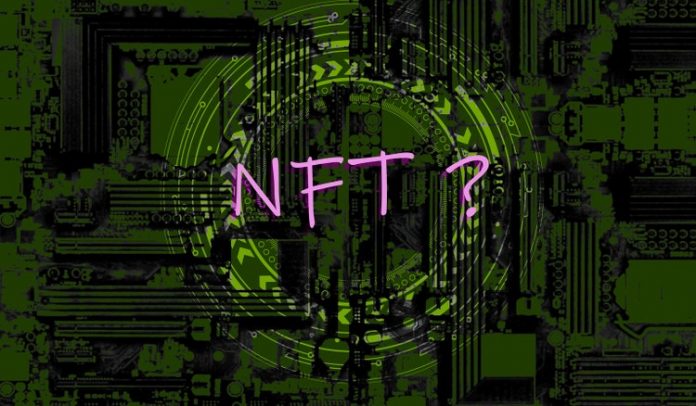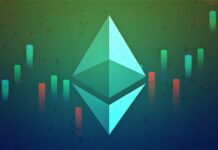Vasil Dimitrov/iStock via Getty Images
NFTs – What they are and what they’re not
To his own amazement, a little-known graphic artist from Charleston, SC named Mike Winklemann (pseudonym “Beeple”) became the poster person for the new rage when one of his NFTs sold at auction in March 2021 for the equivalent of $69.3 million. The auction began at $100 (which is what Winklemann’s prints were selling for just 5 months earlier). Mr. Winklemann clearly won the lottery. He was virtually speechless when interviewed.
NFTs are already becoming serious business and by all appearances, they may have a long way to go. According to DappRadar, NFT trading volume in 2021 exceeded $23 billion (up from just $95 million in 2020). That’s about 250 X in growth – the kind that whets every investor’s appetite. There are more than two dozen online marketplaces now that allow people to buy, sell, and even create NFTs.
If you are still trying to wrap your brain around the concept of a fungible token (aka cryptocurrency), you may have to stretch it even further to deal with non-fungible ones. For starters, there are already way more of the non-fungible kind than the fungible kind. Tens of thousands have already been “minted”, and because virtually anyone can create one, that could easily grow to be millions before long.
The two types of digital tokens are related in that you have to own the fungible kind to purchase the non-fungible kind. Otherwise, the fungible tokens are as different from non-fungible tokens as professional golf is from miniature golf.
Most of the initial applications for NFTs have been in graphic arts, where they offered a highly compelling way for artists to sell their work (and a way to even collect royalties every time it sells again afterward). The concept has quickly spread to other digital mediums and industries that include online gaming, sports trading cards, collectibles, luxury goods, automobiles, news organizations, entertainment companies, and a host of assorted memorabilia emanating from corporations, financial institutions, universities, artists, and other sources.
While the mainstream media focuses on the standouts that have sold for millions of dollars, there has been a litany of articles in more focused sources that tell us how broadly the NFT concept has penetrated our social fabric. Here’s a sampling:
- Sports betting platform DraftKings (NASDAQ:DKNG) offer NFTs of famous players, their records, exemplary game moments, and even their game-worn jerseys. NBA TopShot offers the same thing with a focus on pro basketball.
- Twitter (NYSE:TWTR) CEO Jack Dorsey created an NFT of his very first tweet. (The one-sentence tweet sold for $2.9 million.)
- The NYSE has created NFTs to memorialize the first trades of IPOs like DoorDash (NYSE:DASH), Roblox (NYSE:RBLX), Snowflake (NYSE:SNOW), and Spotify (NYSE:SPOT).
- UC Berkeley created an NFT of the cancer immunotherapy research work that earned one of their professors a Nobel Prize.
- Time Magazine has launched 4,676 NFTs featuring the artworks of more than 40 artists.
- Nissan Canada offered an NFT of the Nissan GT-R in supernatural environments that incorporate holographic effects. The artwork comes with an actual GT-R NISMO Special Edition car.
- Gucci, Burberry (OTCPK:BURBY), and Givenchy all launched online platforms containing NFTs of their luxury products.
- The International Chess Federation will offer NFTs of iconic match moments.
- Applebee’s, Domino’s (NYSE:DPZ), and Taco Bell have entered the NFT market.
- The Associated Press (AP) plans to launch NFTs of its photos
- Walmart (WMT) has announced plans to sell NFTs.
So, what exactly are they? How do they relate to cryptos? Are they just a new art form? And should you consider them a collectible or an investment? Let’s look at what we know.
An NFT is computer code. It takes on meaning by sitting on a blockchain network that anyone can see and validate. It’s all part of the emerging decentralized finance (“defi”) concept that you hear about now, where entirely new financial constructs exist in a world with no corporation or government agency behind them. That is both good news and bad news. They are not encumbered by regulations and are free to go wherever the public wants them to go. But they lack the legal and regulatory protections that consumers and investors rely on.
NFTs are essentially transacted on a peer-to-peer basis over the Internet with the help of middlemen that let you know what’s available and facilitate the transaction. These middlemen are the online marketplaces, that have sprung up to help people buy, sell, or even create these novel items, such as OpenSea, Rarible, Mintable, and Nifty Gateway.
What does this computer code do for anyone? It is presumed to certify ownership of something. Here’s where you may have to stretch your brain a bit. Sometimes that something is a physical object, like art, music, or film. In that case, the NFT is the statement of authenticity and ownership. Most times it’s something digital, so the object can be attached right to the code that says you own it.
But here’s where it begins to push the legal envelope. An NFT doesn’t actually confer or legitimize legal ownership. It really just verifies the purchase transaction. That’s helpful. No need for paper receipts and transactions can be virtual and instantaneous. But it leaves a gaping legal hole in the process that is throwing a significant monkey wrench in the NFT machinery. (More on this below.)
Investment or Collectible
One thing to keep in mind is that people don’t pay for NFTs with greenbacks or other conventional currency. They pay in crypto, primarily Ethereum or some other token specified by the marketplace on which they are offered. This fact all by itself can wildly inflate their value. When you turn hard currency into another form of exchange, it can alter its value in our minds.
Luxury retailers know this well, strategically placing stores near casinos to capture the euphoria of winning gamblers who feel they are spending chips from winnings rather than real dollars. The winning bidder for Beeple’s record-breaking NFT paid in Ethereum and we have no idea what the original cost basis was for the crypto but chances are good it was a heck of a lot lower than the exchange rate at the time of the NFT purchase.
Unfortunately, the world is now anchored to the incredible price paid for Beeple’s NFT, which is likely distorting other prices throughout the medium. Purchasing an NFT for an inflated value now becomes a way for the wealthy to show that they can afford to be so extravagant, not unlike the visible purchases they make of extravagant homes, planes, and yachts.
Unlike cryptos, NFTs are not a medium of exchange. They are things you can buy with your cryptocurrency and by not being fungible, they are, by definition, one-of-a-kinds. Essentially, that makes them collectibles. And like other collectibles, such as art, wine, rare coins, or classic cars, we can expect some will rise to the top of the popularity heap and will take on some degree of investment status. But many will not and those will likely turn out to just be an expensive hobby.
The old thinking was that art wasn’t worth much in digital form, since you couldn’t put it on your wall. That thinking has been turned upside down with NFTs. Because NFTs are so novel, there is more cachet to saying you own one than there is actually having them displayed on your wall at home. Suddenly, the ability to open your cell phone and boast that you own a popular NFT has become the latest way for celebrities to show their feathers.
Every indication now says the market will be flooded with NFTs before long. How will the value of any one of them hold up when they are everywhere? What will be the lasting criteria of their value once the novelty wears off and scarcity turns to ubiquity?
So, does buying an NFT make you an investor or collector? Well, does buying any piece of art make it an investment? Sometimes yes. But most times no. Like any other collectibles, some NFTs will retain value, some will explode in value, and many will become an expensive lesson in herding. There is no way to predict that the one you purchase will follow any of these paths, so choose them for the value they provide to you even if you never sell them.
Pitfalls of an unregulated market
Let’s circle back to the legal issues. Any market that exists without government or even corporate oversight will be subject to risks like fraud, manipulation, untrustworthy players, and scams. Cryptographic markets have answers to some of these things, but not all, and it will take a while to iron them out under any condition. In the meanwhile, a lot of well-meaning folks risk being fleeced, or simply misjudging the frenzy of an early market and paying a lot of money for something that eventually becomes worthless.
When a new market consists of an entirely new type of product that many people don’t fully understand, it can get even stickier. And thus it is with NFTs. In an ironic twist of consumer perceptions, the notion of a verified transaction is being widely confused with the notion of verified ownership, leaving bad actors with a hole they are now massively exploiting – the ability to conduct a transaction for something they did not legally own in the first place.
Of the $23 billion in sales reported by DappRadar above, “$1.9 billion were stolen in hacks, exploits, or simply bad practices”. That’s about 8% of the trading volume and the crooks may just be gearing up.
The problem is not isolated or trivial. Reuters recently reported that online marketplace DeviantArt, a platform with more than 60 million registered users, recently started monitoring fake offerings and “flagged more than 90,000 since it started scanning in September [2021], with its alerts for NFT infringements jumping more than tenfold in the first three months alone”. Another one of the prominent online marketplaces recently shut down when they realized how many fraudulent transactions were occurring through their system.
There is no immediate answer to this security issue. NFTs are easy to make and offer for sale. A marketplace that curates its NFTs and its artists will likely be safer to deal with, but even they could potentially be vulnerable. Those that openly deal with anyone who wants to use them could be riddled with fake NFTs that are being offered by someone who obtained the art by questionable means or never actually obtained it at all.
Few stock winners in the space yet
If you do want to invest in NFTs, the best path is more logically going to be by investing in the businesses that will make money from them rather than by buying the items themselves and hoping to wake up one day and have a “Beeple” moment.
If you are going to look for an NFT play among equities, the search should begin with companies for whom NFTs will move the dial. At this point, companies like Walmart should not be on your shortlist for that purpose.
The most direct targets would intuitively be the marketplaces. Think of them as the equivalent of miners on the crypto side. Unfortunately, none are public companies yet. They are, however, getting loads of investment from private equity and venture capital funds right now. That means they will come public at some point so those funds can get their exits, but when they do, you can count on them being as highly valued as the venture community thinks they can make them. So, jumping on those IPOs should be done with the same level of caution as jumping on a bored ape NFT.
In addition, the list below contains existing companies that have been previously hyped as NFT contenders. So far, 5 out of 6 of them have performed miserably in the past year. At best, they should be considered more of a watch-and-explore-further list than a shortlist of investment candidates just yet.
Sysorex (OTCQB:SYSX) – SYSX is an Ethereum crypto miner that is expanding into NFTs on the Metaverse. In September 2021, they announced the completion of an investment in The Hunt, a marketplace to develop, display and sell augmented reality NFTs.”
Dolphin Entertainment (NASDAQ:DLPN) – DLPN is a PR company that is moving into NFTs.
Funko (NASDAQ:FNKO) – FNKO licenses pop culture rights to create everything from action figures to stuffed animals. Its products have included Marvel superheroes, Star Wars, and Harry Potter. The company bought a majority stake in TokenWave to add NFTs to their existing product line.
Jiayin Group (NASDAQ:JFIN) – A Chinese fintech company that was supposedly getting into NFTs.
Liquid Media (NASDAQ:YVR) – Based in Vancouver, video game producer Liquid Media plans to offer “Red carpet NFTs” of popular Hollywood personalities and classic movies.
WISeKey (NASDAQ:WKEY) – Swiss company WISekey specializes in online and digital security and is pushing into security for NFTs.
The performance of these stocks for the last year is shown below.
|
Stock |
12-month price change a/o 2/14/22 |
|
SYSX |
-89.93% |
|
DLPN |
-18.72% |
|
FNKO |
+38.69% |
|
JFIN |
-49.56% |
|
YVR |
-68.42% |
|
WKEY |
-62.61% |
Source: Seeking Alpha
Bottom line
NFTs can be very cool, very artistic, and unique. Business in them is booming. That should make for fertile speculation ground, but as yet, no big winners have emerged and many of the candidates are not public yet. Buying NFTs themselves can represent a fun hobby and just might make you some money if you get lucky. But the legal and security issues are serious, so you definitely want to stay with reputable sources. Meanwhile, existing public companies in the NFT space have largely been disasters as investments. The game is on, but right now it may be better to just be an observer.
Credit: Source link






















 Bitcoin
Bitcoin  Ethereum
Ethereum  Tether
Tether  Solana
Solana  USDC
USDC  XRP
XRP  Lido Staked Ether
Lido Staked Ether  Dogecoin
Dogecoin  Toncoin
Toncoin  Cardano
Cardano  Shiba Inu
Shiba Inu  Avalanche
Avalanche  TRON
TRON  Wrapped Bitcoin
Wrapped Bitcoin  Polkadot
Polkadot  Bitcoin Cash
Bitcoin Cash  Chainlink
Chainlink  NEAR Protocol
NEAR Protocol  Polygon
Polygon  Litecoin
Litecoin  Internet Computer
Internet Computer  LEO Token
LEO Token  Uniswap
Uniswap  Fetch.ai
Fetch.ai  Dai
Dai  Render
Render  Ethereum Classic
Ethereum Classic  Hedera
Hedera  First Digital USD
First Digital USD  Aptos
Aptos  Cosmos Hub
Cosmos Hub  Pepe
Pepe  Cronos
Cronos  Mantle
Mantle  Filecoin
Filecoin  Wrapped eETH
Wrapped eETH  Stellar
Stellar  OKB
OKB  Immutable
Immutable  Stacks
Stacks  Renzo Restaked ETH
Renzo Restaked ETH  dogwifhat
dogwifhat  Optimism
Optimism  Arbitrum
Arbitrum  Bittensor
Bittensor  The Graph
The Graph  Arweave
Arweave 
